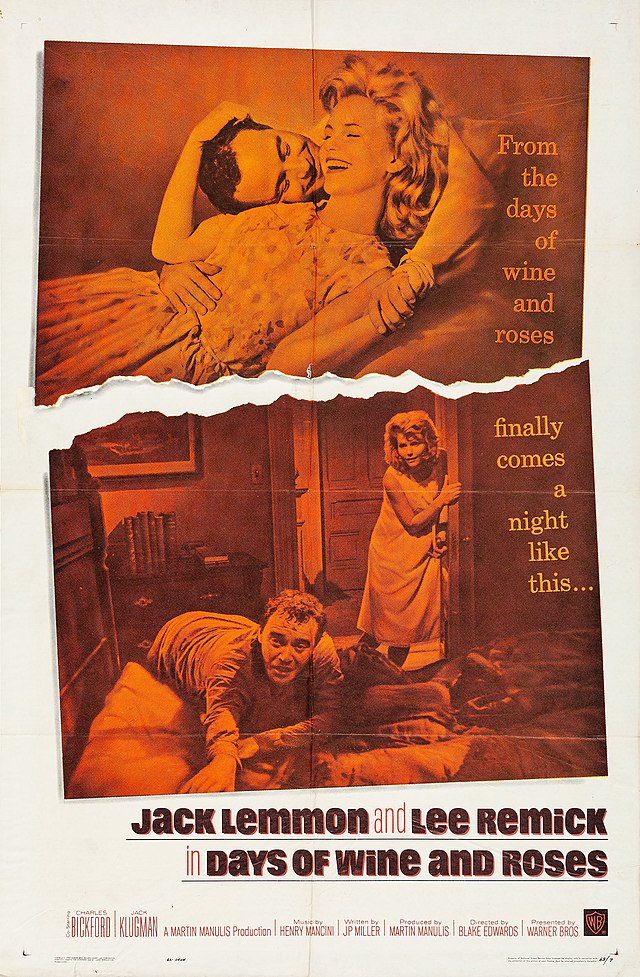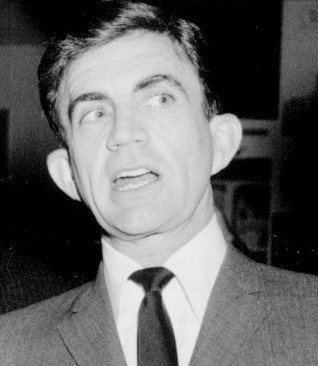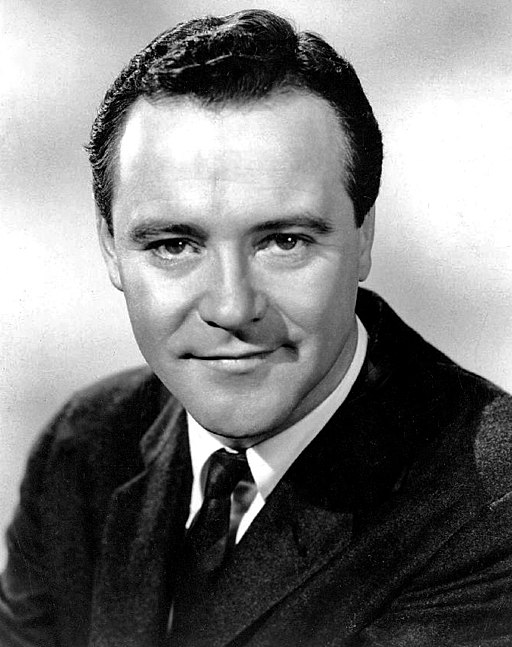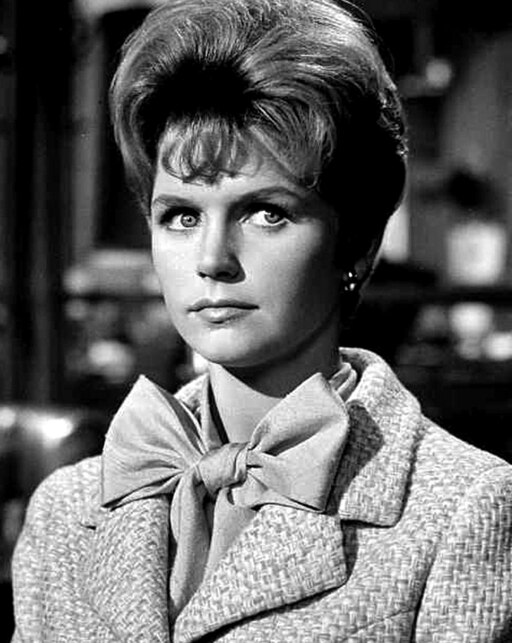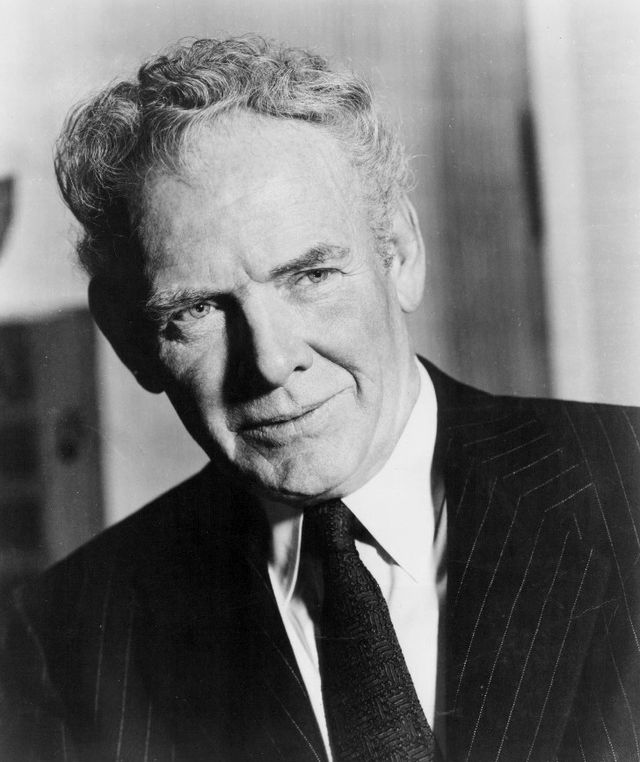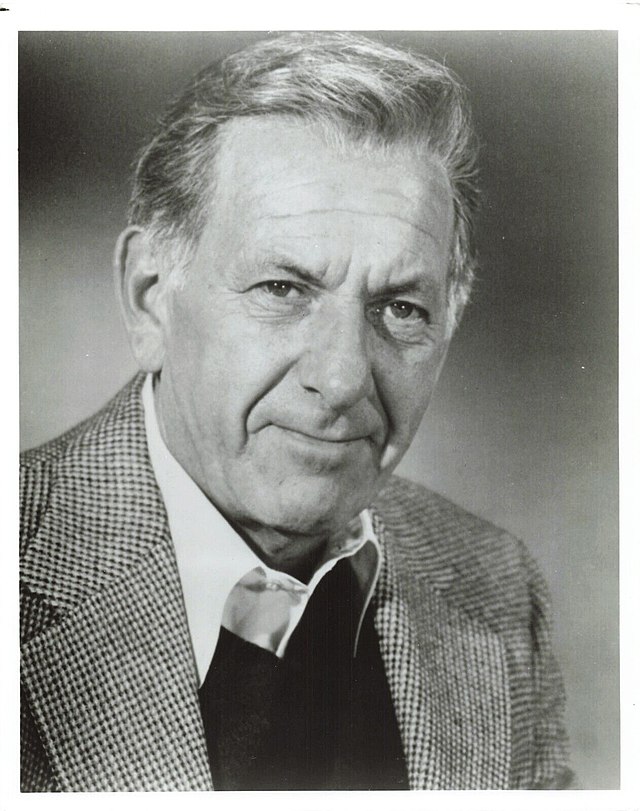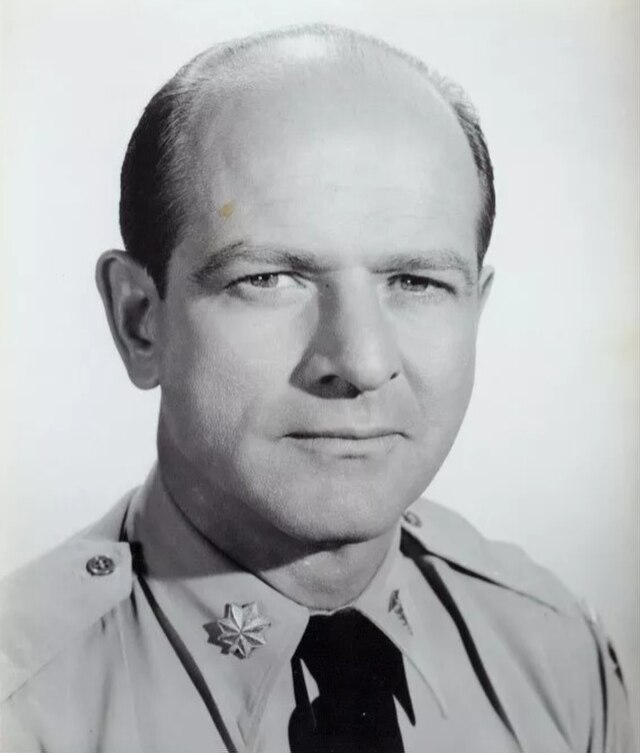Days of Wine and Roses - 1962
back| Released by | Warner Bros. |
| Director | Blake Edwards |
| Producer | Martin Manulis |
| Script | J.P. Miller (based on his 1958 teleplay of the same name) |
| Cinematography | Philip H. Lathrop |
| Music by | Henry Mancini |
| Running time | 117 minutes |
| Film budget | $2 million |
| Box office sales | $8.1 million |
| Main cast | Jack Lemon - Lee Remick - Charles Bickford - Jack Klugman - Alan Hewitt |
Days of Wine and Roses
A Harrowing Portrayal of Love and Addiction
Days of Wine and Roses is a poignant drama that delves into the struggles of alcoholism and its impact on the lives of a young couple.
The film received critical acclaim for its realistic portrayal of addiction, bolstered by powerful performances from Jack Lemmon and Lee Remick. Both actors were nominated for Academy Awards for their roles. The movie's theme song, composed by Henry Mancini, also became popular and won the Academy Award for Best Original Song.
Related
Days of Wine and Roses – 1962
Summary
Days of Wine and Roses is a drama that explores the harrowing effects of alcoholism on a seemingly idyllic couple. The story follows Joe Clay (Jack Lemmon), a charismatic public relations executive in San Francisco, whose job often involves entertaining clients with alcohol. He meets Kirsten Arnesen (Lee Remick), a secretary who initially dislikes drinking. However, Joe introduces her to the pleasures of social drinking, and she soon becomes his drinking companion.
Their relationship quickly blossoms into romance, and they get married. What begins as casual and social drinking escalates into a serious problem for both Joe and Kirsten. As their dependency on alcohol grows, it starts affecting their personal and professional lives. Joe’s work performance deteriorates, and he loses his job. Kirsten, once a responsible and sober woman, becomes increasingly addicted, neglecting her duties as a wife and mother.
The turning point in the film comes when Joe’s alcoholism reaches such an extreme that he is admitted to a sanitarium after a mental breakdown. At the urging of Jim Hungerford (Jack Klugman), a fellow recovering alcoholic, Joe joins Alcoholics Anonymous. He begins to sober up and fights to reclaim his life. He tries to bring Kirsten along on his path to recovery, but she is deeply in denial and unwilling to quit drinking.
Joe’s newfound sobriety and commitment to a better life create a rift between him and Kirsten. Joe, realizing he cannot save her if she doesn’t want to save herself, ultimately chooses to leave Kirsten and their daughter Debbie in a desperate bid to maintain his sobriety. The film ends on a poignant note, with Joe walking away into the night, unsure of his future but determined to stay sober, while Kirsten remains lost in her addiction.
Analysis
Days of Wine and Roses is a powerful film that realistically portrays the descent into alcoholism and its devastating impact on relationships and personal well-being. The film is lauded for its unflinching portrayal of addiction, a topic that was not commonly addressed in Hollywood films of that era. The story is both a love story and a cautionary tale, illustrating how addiction can erode the very foundation of personal and romantic relationships.
Themes:
- Addiction and Self-Destruction: The central theme of the film is the destructive nature of addiction. Joe and Kirsten’s journey demonstrates how alcohol, which starts as a social lubricant, can take over one’s life, leading to self-destructive behavior, loss of jobs, and strained relationships. The film effectively shows the gradual transition from casual drinking to full-blown alcoholism, emphasizing how easily one can slip into addiction.
- Denial and Enabling: The film also explores the concepts of denial and enabling. Kirsten’s initial reluctance to drink and subsequent fall into alcoholism demonstrate how denial plays a critical role in addiction. Despite the visible impact on their lives, both characters are initially in denial about their problem. Joe’s introduction of alcohol to Kirsten’s life, and their mutual enabling, highlights how addiction can be perpetuated within relationships.
- Hope and Despair: Despite its grim subject matter, the film also touches on the themes of hope and redemption. Joe’s recovery process and involvement in Alcoholics Anonymous show that there is a way out of addiction. However, the film does not shy away from the reality that recovery is a difficult, ongoing process, marked by setbacks and difficult choices. Kirsten’s inability to commit to sobriety serves as a counterpoint, illustrating the despair and hopelessness that often accompany addiction.
- The Impact on Family: The film poignantly captures the impact of alcoholism on family dynamics. Joe and Kirsten’s relationship deteriorates as their addiction takes hold, affecting their ability to care for their daughter. The choice Joe makes to leave Kirsten is heart-wrenching but necessary for his survival, showing the tough decisions that families affected by addiction must sometimes make.
Performances and Direction:
Jack Lemmon and Lee Remick deliver powerful performances that bring depth and realism to their characters. Lemmon’s portrayal of Joe’s charm, descent into addiction, and struggle for recovery is compelling and nuanced. Remick’s performance as Kirsten is equally strong, capturing the transformation from a sober, responsible individual to a desperate, addicted woman.
Blake Edwards, known for his work in comedy, takes a starkly different turn with this film. His direction is sensitive and effective, focusing on the characters’ emotional journeys rather than sensationalizing the subject matter. Edwards creates a realistic portrayal of alcoholism, devoid of melodrama, which resonates with audiences.
Cinematography and Music:
The cinematography by Philip H. Lathrop uses shadows and lighting effectively to mirror the film's mood. Dark, shadow-filled scenes reflect the darkness of addiction, while brighter, clearer scenes are used in moments of sobriety and hope. Henry Mancini’s score, particularly the haunting theme song, underscores the film’s emotional weight, adding to the atmosphere of melancholy and tragedy.
Legacy and Impact:
Days of Wine and Roses was a significant film for its time, addressing alcoholism with a seriousness and realism that was rare in mainstream cinema. The film contributed to a greater awareness and understanding of alcoholism as a disease rather than a moral failing. It also helped destigmatize the discussion around addiction and inspired other filmmakers to explore similar themes.
The film’s ending, which does not offer a neat resolution, is particularly poignant and realistic. It acknowledges that recovery is not guaranteed and that addiction is a lifelong struggle. This honesty is part of what makes the film enduring and impactful.
Conclusion
Days of Wine and Roses is a landmark film that offers a compelling, honest look at the effects of alcoholism. Through strong performances, skilled direction, and a haunting narrative, it tells a story of love, addiction, and the difficult path to recovery. Its legacy continues to resonate, making it a significant piece of cinema that still speaks to contemporary audiences about the devastating effects of addiction.
Classic Trailer of Days of Wine and Roses:
Full Cast:
· Jack Lemmon as Joe Clay
· Lee Remick as Kirsten Arnesen Clay
· Charles Bickford as Ellis Arnesen (Kirsten's father)
· Jack Klugman as Jim Hungerford (Joe's friend and fellow recovering alcoholic)
· Alan Hewitt as Rad Leland (Joe's boss)
· Tom Palmer as Ballefoy (Joe's colleague)
· Debbie Megowan as Debbie Clay (Joe and Kirsten's daughter)
· Maxine Stuart as Dottie (Kirsten's friend)
· Jack Albertson as Trayner (A company executive)
· Ken Lynch as Liquor Store Clerk (the clerk at the liquor store)
· Merritt Bohn as Doctor (the doctor at the sanitarium)
· Jack Orrison as 'The T.V. Man' (the person who shows the TV set)
The Direction of Blake Edwards:
Blake Edwards' direction of Days of Wine and Roses is a standout example of his versatility as a filmmaker, known more commonly for his work in comedy. This film showcases his ability to delve into deep, serious subject matter with sensitivity, nuance, and realism. Edwards' direction plays a crucial role in bringing the story of Joe and Kirsten's descent into alcoholism to life, making the film both powerful and impactful.
Realism and Sensitivity
Blake Edwards approaches the subject of alcoholism with a commitment to realism, which was relatively rare in Hollywood films of the early 1960s. His direction avoids sensationalism and melodrama, instead opting for a grounded, honest portrayal of addiction. Edwards focuses on the gradual decline of Joe and Kirsten’s lives, emphasizing how alcoholism subtly takes over every aspect of their existence. This slow-burn approach makes the story more relatable and powerful, as audiences can see themselves in the characters' shoes, understanding how addiction can creep into anyone's life.
By emphasizing the everyday settings—offices, apartments, parties—Edwards creates a world that feels ordinary and accessible. This choice makes the film's subject matter even more unsettling, as it underscores that addiction is a problem that can affect anyone, regardless of their background or lifestyle. His use of familiar, mundane environments contrasts sharply with the dark journey of the characters, highlighting the insidious nature of alcoholism.
Character-Driven Focus
Edwards' direction in Days of Wine and Roses is deeply character-driven. He gives his actors the space to deliver powerful, emotionally raw performances. Jack Lemmon and Lee Remick’s portrayals of Joe and Kirsten are central to the film's success, and Edwards wisely allows their performances to take center stage. He captures their transformations—from charming, social drinkers to desperate addicts—with a close-up, intimate camera style that makes the audience feel the characters' pain and inner turmoil.
Edwards also utilizes silence and stillness effectively, letting the actors' facial expressions and body language convey much of the story. This subtle, nuanced approach allows the viewer to fully grasp the emotional weight of each scene. The moments of quiet despair, such as Joe staring at a drink or Kirsten’s vacant gaze, are as telling as the more dramatic scenes, painting a complete picture of the characters’ internal struggles.
Visual Style and Cinematic Techniques
The visual style of Days of Wine and Roses is carefully crafted to reflect the themes of the film. Working with cinematographer Philip H. Lathrop, Edwards uses lighting and composition to mirror the characters' descent into darkness. The use of shadows and dim lighting in certain scenes underscores the growing sense of despair and loss. For example, the scenes of Joe in the sanitarium and the couple's confrontations are often filmed in low light, highlighting their bleakness and hopelessness.
Edwards also effectively uses reflective surfaces, such as windows and mirrors, to symbolize the characters' introspection and the double life that addiction forces them to lead. These visual elements add layers of meaning to the scenes, offering a richer cinematic experience. The recurring image of the greenhouse, filled with plants that Kirsten neglects as her addiction worsens, serves as a metaphor for their deteriorating lives, showing Edwards' skill in using visual symbolism to enhance the narrative.
Pacing and Structure
The pacing of Days of Wine and Roses is deliberate and methodical, reflecting the slow but relentless grip of addiction. Edwards structures the film to gradually escalate the tension, mirroring the way alcoholism slowly consumes Joe and Kirsten’s lives. The first half of the film is relatively light and hopeful, showing the couple's romance and the initial joy of their drinking. However, as the story progresses, Edwards shifts the tone, making the scenes more intense and fraught with emotional conflict.
Edwards’ direction ensures that the narrative flow maintains a sense of impending doom, even during moments of respite or recovery. This pacing keeps the audience engaged and invested in the characters' fates, feeling both their highs and lows. The film's climax and conclusion are handled with restraint, avoiding a neat resolution. Instead, Edwards leaves the ending open-ended, emphasizing that the battle with addiction is ongoing and that not all stories end with redemption.
Emotional Impact and Legacy
Blake Edwards’ direction ensures that Days of Wine and Roses is a film that resonates on an emotional level. His handling of the material is both empathetic and unflinching, making it impossible for the audience to ignore the reality of addiction. By focusing on the personal struggles of Joe and Kirsten, Edwards creates a powerful narrative that highlights the human cost of alcoholism, encouraging viewers to think deeply about the issue.
The film’s lasting impact is a testament to Edwards’ skill as a director. His ability to shift from his established comedic style to a serious drama without losing the authenticity of either genre demonstrates his versatility. The honesty and sensitivity with which he handles Days of Wine and Roses set a standard for films about addiction and helped pave the way for more serious, realistic portrayals of similar themes in cinema.
Blake Edwards’ direction in Days of Wine and Roses is marked by its sensitivity, realism, and attention to detail. His character-driven approach, combined with a careful use of visual style and pacing, creates a film that is both deeply affecting and thought-provoking. Edwards' ability to capture the complexities of addiction with such empathy and understanding makes Days of Wine and Roses a timeless piece of cinema that continues to be relevant and impactful decades after its release.
Subtle Performance of Lee Remick:
Lee Remick's performance in Days of Wine and Roses is a masterclass in subtlety, emotional depth, and transformation. Playing the role of Kirsten Arnesen Clay, Remick brings to life the tragic arc of a woman who starts as a bright, sober individual and descends into the darkness of alcoholism. Her portrayal is both haunting and empathetic, capturing the nuances of a character struggling between love, addiction, and the desire for normalcy.
Subtle Introduction to Kirsten
At the beginning of the film, Remick portrays Kirsten as a sweet, somewhat naive young woman who is drawn to Joe Clay’s (Jack Lemmon) charm and vitality. Initially, Kirsten is depicted as someone who doesn’t drink, indicating a sense of self-control and perhaps innocence. Remick’s performance in these early scenes is characterized by a lightness and freshness, her eyes bright with curiosity and hope. This initial portrayal establishes Kirsten as a relatable and likable character, setting the stage for the audience to feel deeply for her as the story progresses.
Transformation Through Alcohol
One of the most remarkable aspects of Remick’s performance is how she conveys Kirsten’s gradual transformation from a non-drinker to an alcoholic. When Joe introduces Kirsten to her first Brandy Alexander, Remick’s acting subtly shows a shift—from reluctance and curiosity to pleasure. Her facial expressions and body language subtly hint at the beginning of Kirsten’s dependence on alcohol, even before it becomes overt. Remick captures the allure and comfort that alcohol provides to Kirsten, making it believable how someone could slide into addiction almost without realizing it.
As the film progresses, Remick skillfully portrays the complexity of Kirsten’s addiction. Her performance conveys not only the physical signs of alcoholism—such as slurred speech, unsteady movements, and disheveled appearance—but also the emotional and psychological effects. Remick’s portrayal highlights Kirsten’s growing detachment from reality and her increasing dependence on alcohol to cope with life’s challenges. Her eyes, once bright and hopeful, become dull and vacant, mirroring Kirsten’s inner despair.
Emotional Depth and Internal Conflict
Remick excels in portraying Kirsten’s internal conflict. On one hand, she loves Joe and wants to be a good wife and mother; on the other, she is consumed by her addiction. Remick's performance captures this duality, showing Kirsten’s moments of clarity and self-awareness, where she recognizes her addiction and its impact, juxtaposed with scenes of denial and desperate need for alcohol. Her acting is layered, portraying Kirsten's guilt, shame, and fear, yet also her stubborn resistance to giving up drinking.
One of the film’s most poignant scenes is when Kirsten, in a fit of desperation, rummages through the apartment looking for a hidden bottle of alcohol. Remick’s portrayal of Kirsten’s frantic, almost animalistic search is raw and heartbreaking. Her physicality in the scene—trembling hands, disheveled hair, and frantic movements—communicates the grip of addiction more powerfully than words could. This scene is a testament to Remick’s ability to convey profound emotions through her body language and facial expressions.
The Downward Spiral and Consequences
As Kirsten’s addiction spirals out of control, Remick’s performance becomes more intense and heartbreaking. She shows Kirsten’s deterioration not just physically, but emotionally and mentally. Remick portrays Kirsten’s transformation from a joyful, loving wife into someone who is almost unrecognizable—withdrawn, bitter, and consumed by her need for alcohol. Her performance in these later scenes captures the essence of despair, making the audience feel Kirsten’s pain and hopelessness.
In the scene where Joe confronts Kirsten about her drinking and tries to get her to attend Alcoholics Anonymous meetings, Remick’s performance is both defensive and vulnerable. She portrays Kirsten's anger and frustration at being controlled, yet also her deep-seated fear and helplessness. This duality makes Kirsten a complex character rather than a one-dimensional figure, showcasing Remick’s ability to bring depth and authenticity to her role.
Tragic Realization and Final Separation
Toward the film’s conclusion, Remick’s portrayal of Kirsten reaches its emotional peak. The scene where Joe decides to leave her to maintain his sobriety is gut-wrenching, not only for the narrative but because of Remick’s powerful performance. Her portrayal of Kirsten’s reaction—initial disbelief, followed by anger, and then a devastating sense of loss—is heartbreakingly real. In these moments, Remick shows Kirsten’s vulnerability and the deep love she still has for Joe, even as her addiction stands in the way.
The final image of Kirsten, standing in the doorway, lost and alone, is haunting. Remick’s expression, a mixture of sadness, longing, and resignation, leaves a lasting impression on the viewer. It underscores the tragedy of Kirsten’s situation—that despite the love she feels, her addiction has isolated her and left her alone. This ending, left open-ended, allows Remick’s performance to resonate with the audience, making them reflect on the complexities of addiction and the personal toll it takes.
Empathy and Realism
Lee Remick’s portrayal of Kirsten is notable for the empathy she brings to the character. Instead of presenting Kirsten as merely a victim or a cautionary figure, Remick’s performance offers a nuanced and human portrayal of someone grappling with addiction. Her portrayal is devoid of judgment, allowing the audience to understand Kirsten’s struggles and root for her, even as she makes poor choices. This empathy makes Kirsten’s story more relatable and underscores the film’s message about the human cost of addiction.
Remick’s ability to show the gradual change in Kirsten’s personality and demeanor makes her performance realistic and believable. Her careful modulation of tone, facial expressions, and physicality ensures that Kirsten’s journey feels authentic and grounded in reality. Remick doesn’t resort to overacting or melodrama, which would have detracted from the film’s impact. Instead, her nuanced performance adds to the film’s emotional weight and helps convey the insidious nature of alcoholism.
Critical Acclaim and Legacy
Lee Remick’s performance in Days of Wine and Roses earned her an Academy Award nomination for Best Actress, a testament to the strength of her portrayal. Her role as Kirsten remains one of the most memorable in her career, highlighting her range and ability to tackle challenging, emotionally complex characters. Remick’s performance has been praised for its realism and emotional depth, making it a benchmark for portrayals of addiction in cinema.
Lee Remick’s performance in Days of Wine and Roses is a compelling and heart-wrenching portrayal of a woman’s descent into alcoholism. Through her nuanced and emotionally rich acting, Remick brings to life the complexities of addiction, making Kirsten’s journey both relatable and tragic. Her ability to convey the internal conflict, despair, and occasional moments of clarity that define Kirsten’s character makes her performance unforgettable. Remick’s portrayal stands as a powerful reminder of the devastating impact of addiction and the human stories behind it.
Important Quotes from the Movie:
· Joe Clay (Jack Lemmon):
“You remember how it really was? You and me and booze—a threesome. You said it was my best friend. Well, it turned out to be the kind of friend who'd kill you if you let it. But when I tried to leave him, he wouldn't let me.”
This quote reflects Joe's acknowledgment of the destructive nature of alcohol and his struggle to break free from its hold. It also highlights his realization of how deeply intertwined their relationship with alcohol was.
· Kirsten Arnesen Clay (Lee Remick):
“I walked by the liquor store on the way home and I thought I could smell the warmth of the whisky inside. It was raining a little bit, and I could feel the chill in my bones, but I walked on by. Then I got to the corner and I stopped and I said, ‘Just one little drink, it couldn’t hurt anybody.’ So I went back. I bought a pint and it was gone before I knew it. And then I bought another and another.”
This quote illustrates Kirsten's struggle with her addiction and her rationalization process. It shows how her craving for alcohol overpowers her intentions, revealing the insidious nature of addiction.
· Joe Clay (Jack Lemmon):
“They say that whisky kills the desire, I think that’s true. But not for more whisky.”
Joe's comment is a bitter reflection on how alcohol deadens the desire for everything else in life, except for more alcohol. This underscores the addictive cycle that both Joe and Kirsten are caught in.
· Jim Hungerford (Jack Klugman):
“You have to crawl, and you have to drag yourself along the ground, and you have to try and try and try because you don’t know how else to do it.”
Jim, as a recovering alcoholic, offers this insight to Joe, emphasizing the immense effort and perseverance required to overcome addiction. It highlights the reality of the ongoing struggle in recovery.
· Joe Clay (Jack Lemmon):
“I’m not afraid of you anymore, I can walk right past you now. You don’t interest me anymore. You’re a dead thing, it’s all over.”
Joe says this to a bottle of whisky, symbolizing his determination to remain sober and his internal battle with his addiction. This moment is significant as it shows his effort to detach emotionally from alcohol.
· Kirsten Arnesen Clay (Lee Remick):
“I don’t want to be like this. I don’t want to feel like this. I want to crawl in a hole and die.”
Kirsten’s expression of despair encapsulates her deep internal suffering and sense of hopelessness. This quote portrays her emotional breakdown and the overwhelming nature of her addiction.
· Joe Clay (Jack Lemmon):
“There’s a terrible empty feeling, the feeling that the bottom’s dropped out of everything. There’s no reason to breathe, you can’t see anything, you can’t feel anything, you can’t get out of bed in the morning because there’s nothing worth getting up for.”
This quote provides a profound insight into the emotional void that alcoholism creates. Joe describes the emptiness and lack of purpose that alcohol addiction leaves in its wake.
· Kirsten Arnesen Clay (Lee Remick):
“It’s not the end of the world, Joe. People drink, don’t they?”
Kirsten's words capture her initial casual attitude towards drinking and her denial of its potential destructiveness. This perspective contrasts sharply with the eventual reality they face.
· Joe Clay (Jack Lemmon):
“You know, I never knew what a wonderful person you were until I started falling in love with you.”
This early, tender moment between Joe and Kirsten reveals the genuine affection they had for each other, making their later struggles with addiction all the more tragic.
· Joe Clay (Jack Lemmon):
“I love you, Kirsten. I love you so much, I’m willing to let you go.”
In one of the film’s most poignant moments, Joe expresses his love for Kirsten, but also the realization that he cannot help her unless she wants to help herself. This quote underscores the painful decision he makes for his own survival and sobriety.
Classic Scenes from the Movie:
The First Drink Scene: "Brandy Alexander"
This scene is pivotal as it marks the beginning of Kirsten's journey into alcoholism. Joe introduces Kirsten to her first alcoholic drink, a Brandy Alexander, at a party. Initially hesitant, Kirsten takes a sip and then, encouraged by Joe's enthusiasm, consumes more. The moment she tastes the drink, Remick’s facial expression subtly changes, indicating both her surprise and pleasure. This scene is crucial because it foreshadows Kirsten's future struggles and illustrates how Joe’s influence starts her on the path to addiction. The innocence and lightheartedness of this moment starkly contrast with the darkness that follows, making it a classic in its depiction of how something seemingly harmless can lead to devastating consequences.
The Greenhouse Scene: Kirsten's Breakdown
The greenhouse, maintained by Kirsten’s father, is a recurring setting in the film, symbolizing growth and the potential for decay. In one of the film’s most emotionally charged scenes, Kirsten retreats to the greenhouse to drink in secret. Joe finds her there, and they have a heart-wrenching argument about their drinking habits. Kirsten, in a drunken state, becomes hysterical, pulling plants from their pots and destroying the greenhouse. This scene is powerful not only for its symbolism but also for the raw emotion displayed by Lee Remick. Her breakdown in the greenhouse reflects the shattering of her own life and dreams, mirroring the destruction she causes to the plants. It is a visual metaphor for how alcoholism has taken root and destroyed what was once vibrant and alive.
Joe’s Desperate Search for a Drink
Another classic scene that showcases the extent of Joe's addiction is when he desperately searches their apartment for a hidden bottle of alcohol. This scene is both frantic and heartbreaking. Jack Lemmon’s portrayal of Joe’s desperation—overturning furniture, rummaging through cabinets, and tearing the apartment apart—captures the physical and psychological grip of addiction. His acting in this scene emphasizes the loss of control and dignity that accompanies substance dependency. The culmination of his search, when he finds the bottle and greedily drinks, is both a moment of temporary relief for Joe and a realization for the audience of how deep his addiction runs.
The Confrontation and Intervention Scene
In a powerful scene, Joe confronts Kirsten about her drinking, attempting to convince her to join him in Alcoholics Anonymous. They argue intensely, with Joe pleading for Kirsten to see the damage alcohol is doing to their lives. Kirsten, however, is resistant, defensive, and unable to admit her problem. This scene is classic for its emotional intensity and the conflict it reveals—Joe is desperate to pull them both out of their downward spiral, while Kirsten is still in denial. The dialogue is sharp and painful, reflecting the reality of how addiction strains relationships and the difficulty of helping someone who is not ready to help themselves. The tension between love and frustration is palpable, making this one of the most emotionally charged scenes in the film.
The Sanitarium Scene
After a particularly severe drinking binge, Joe is committed to a sanitarium, showcasing the devastating physical and mental toll that alcohol has taken on him. This scene is significant because it represents the lowest point in Joe's struggle with alcoholism. Jack Lemmon’s portrayal of Joe's withdrawal symptoms, including shaking, sweating, and hallucinations, is both realistic and harrowing. The sanitarium scene starkly contrasts with the earlier, more carefree parts of the film, highlighting how far Joe has fallen. It serves as a turning point for Joe’s character, where he begins to recognize the need for serious help. The clinical, sterile environment of the sanitarium, juxtaposed with Joe’s inner turmoil, emphasizes the dehumanizing effects of addiction.
The AA Meeting Scene
Joe attends an Alcoholics Anonymous meeting, marking the beginning of his road to recovery. This scene is significant for its realistic portrayal of support groups and the recovery process. The AA meeting provides a glimpse into the community and understanding that AA offers to recovering alcoholics. Jack Klugman’s character, Jim Hungerford, gives a heartfelt speech about his own battle with alcoholism, which resonates with Joe. This scene emphasizes the film’s message that recovery is possible, but it requires acceptance, support, and a strong commitment to change. It is a hopeful moment in the film, showing Joe’s willingness to fight his addiction and take steps towards rebuilding his life.
The Final Separation Scene
The film’s concluding scene, where Joe makes the painful decision to leave Kirsten, is one of the most poignant and memorable moments. Joe returns home to find Kirsten inebriated again. Realizing that he cannot stay with her without risking his sobriety, he tells Kirsten that he loves her but must leave. Kirsten's pleas for him to stay and her inability to promise she will quit drinking make this scene emotionally devastating. As Joe walks out, Kirsten stands in the doorway, calling his name, and the camera lingers on her desperate, lonely figure. The final image of Joe walking into the fog, leaving Kirsten behind, encapsulates the tragic reality of their situation. This scene underscores the film’s message about the difficulty of overcoming addiction and the harsh choices that sometimes must be made. It leaves the audience with a haunting image of the enduring impact of addiction.
The "Empty Feeling" Monologue
Joe delivers a powerful monologue towards the end of the film, describing the "terrible empty feeling" that comes with addiction. This monologue is a classic moment in the film because it captures the emotional void and sense of hopelessness that addiction creates. Joe's description of his inability to find meaning or purpose resonates deeply, providing insight into why people turn to substances for comfort. This scene highlights the film’s exploration of the psychological aspects of addiction, making it a compelling moment that resonates with viewers.
Awards and Recognition:
Academy Awards (Oscars) - 1963:
- Nominated:
- Best Actor in a Leading Role: Jack Lemmon
- Best Actress in a Leading Role: Lee Remick
- Best Art Direction-Set Decoration, Black-and-White: Joseph C. Wright, George James Hopkins
- Best Costume Design, Black-and-White: Donfeld (Donald Brooks)
- Best Director: Blake Edwards
- Best Writing, Adapted Screenplay: J.P. Miller
- Won:
- Best Music, Original Song: Henry Mancini (music), Johnny Mercer (lyrics) for the song "Days of Wine and Roses"
Golden Globe Awards - 1963:
- Nominated:
- Best Actor in a Motion Picture – Drama: Jack Lemmon
- Best Actress in a Motion Picture – Drama: Lee Remick
- Best Director: Blake Edwards
- Best Motion Picture – Drama
- Won:
- Best Original Song: Henry Mancini (music), Johnny Mercer (lyrics) for "Days of Wine and Roses"
British Academy Film Awards (BAFTA) - 1964:
- Nominated:
- Best Foreign Actor: Jack Lemmon
Directors Guild of America (DGA) Awards - 1963:
- Nominated:
- Outstanding Directorial Achievement in Motion Pictures: Blake Edwards
Laurel Awards - 1963:
- Won:
- Top Song: "Days of Wine and Roses" (Henry Mancini, Johnny Mercer)
- Nominated:
- Top Male Dramatic Performance: Jack Lemmon
- Top Female Dramatic Performance: Lee Remick
Writers Guild of America (WGA) Awards - 1963:
- Nominated:
- Best Written American Drama: J.P. Miller
National Board of Review (NBR) - 1962:
- Won:
- Best Actor: Jack Lemmon
New York Film Critics Circle Awards - 1962:
- Won:
- Best Actor: Jack Lemmon (Tied with Gregory Peck for To Kill a Mockingbird)
Grammy Awards - 1964:
- Nominated:
- Best Original Score Written for a Motion Picture or Television Show: Henry Mancini
Cannes Film Festival - 1963:
- Although Days of Wine and Roses was screened at the Cannes Film Festival, it did not win any awards at this event.
National Film Registry - 2018:
-
In recognition of its cultural, historical, and aesthetic significance, Days of Wine and Roses was selected for preservation in the United States National Film Registry by the Library of Congress in 2018.

